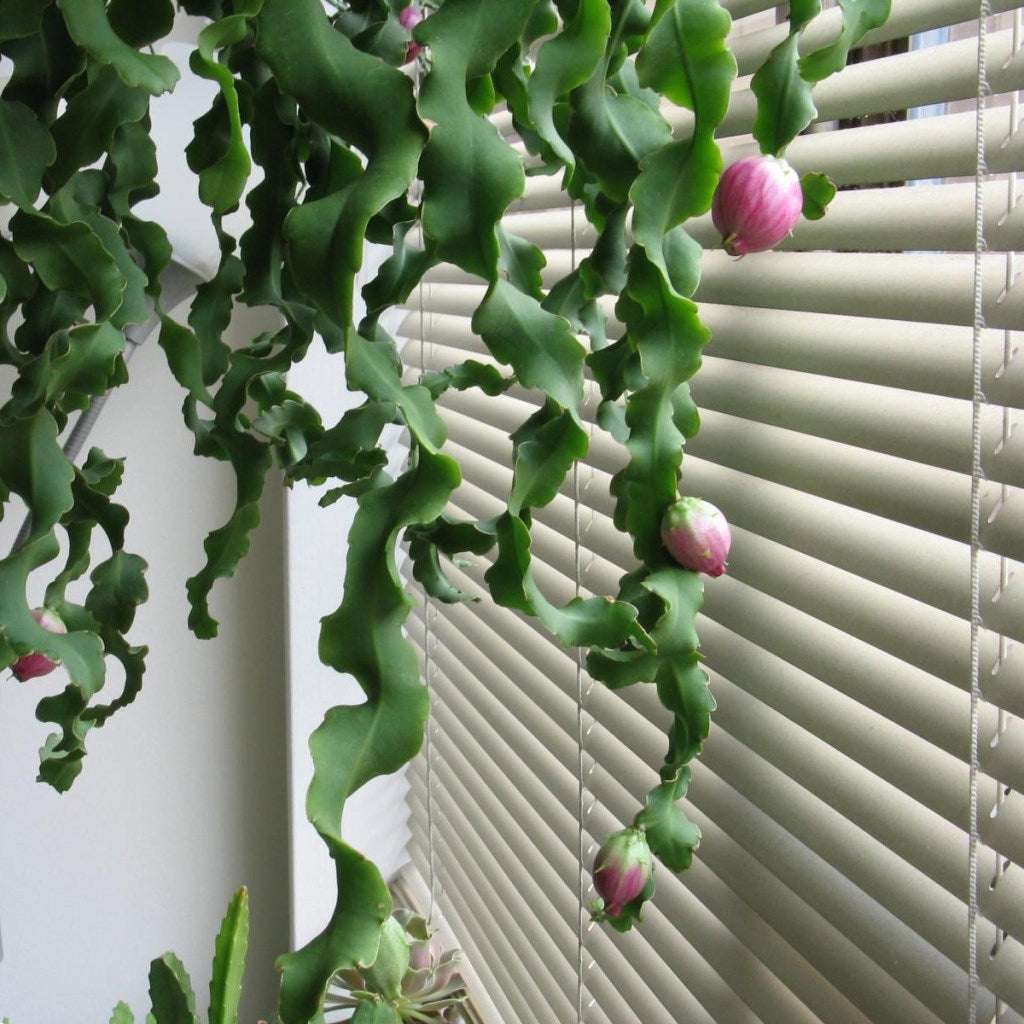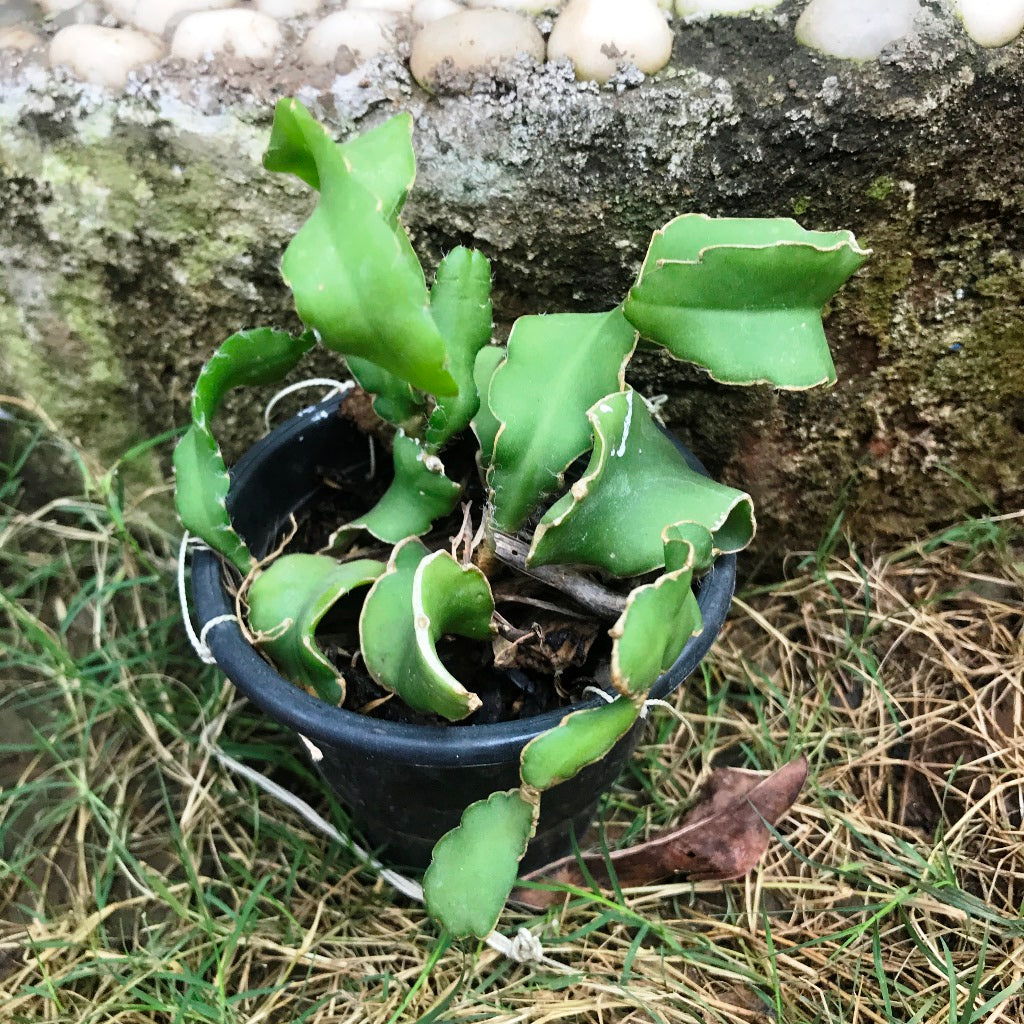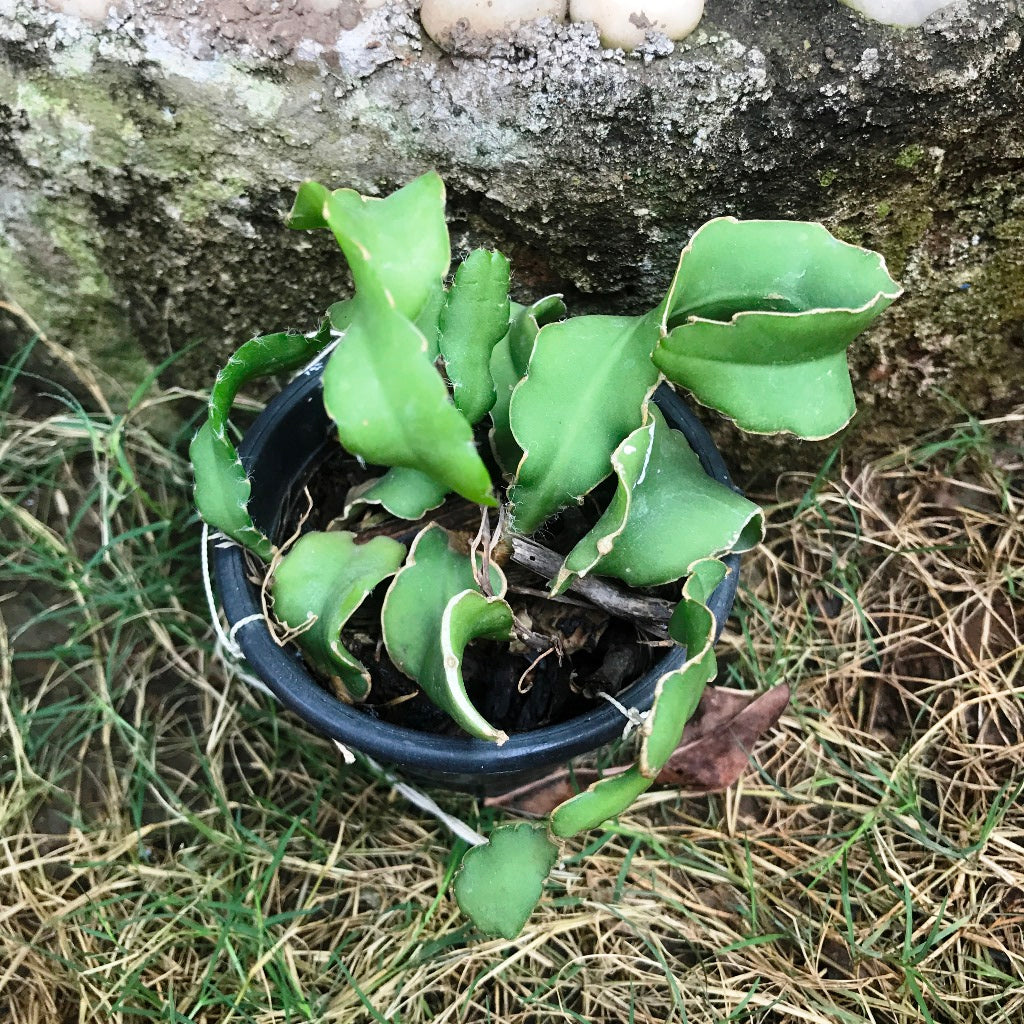The Epiphyllum needs to have moist roots at all times but they should not be sitting in a dish of water. Make sure the top 1/3 of the soil is dry before watering. In late winter, expose the cactus to cooler temperatures to promote spring flowering. Keep them in the basement or a garage for a couple of weeks to spur bud formation.
The other biggest danger when raising Epiphyllums is lighting. Consider that these plants grow in thick forests in the understory and are used to dappled light at best. Just like any plant, they need light but should be protected from bright midday light. Morning sun is preferable with indirect light the rest of the way. If you find a spot where the cactus is happy, make sure to leave it there, as they do not like change.
Use a 10-10-10 fertilizer diluted weekly during the growing season. In Autumn, feed the plant with a 2-10-10 to promote blooming. Repot every 7 years or so, but be warned, the plant only blooms when it is pot bound. It might be best to wait and see if you get flowers before giving the plant a new home.
Mini Dragon Fruit Plant
Family
Cactaceae
Native
Guatemala
Description
Curly Locks' or Epiphyllum Phyllanthus Guatemalense Montrose is a very unusual variety with very interesting self branching growth !
Curly locks have bright green, twisting stems. Plant leaves have wavy edges and the stems beginning at the tip curl underneath. Occasionally some stems may even curl enough to push back into the soil and root themselves!
The plant has a very long stem tube in relation to the bloom size averaging 6" long, open bloom form and its a nocturnal bloomer-simular bloom as E.Guatemalense the species has, but the growth on this one is MONTROSE. This variety is self pollinating and very fertile so almost every bloom will produce a seed pod on its own without the need to assist with pollination. It produces 3-inch (7.6 cm.) wide white flowers with 6-inch (15 cm.) long tubes that open at night.
The fruits are juicy, edible and very delicious. small red ball-like fruits forming at the tip of the leaves. They are small though, like the size of grapes. The flesh inside is white with lots of tiny black seeds. The plant is also self-pollinating and fruits can form even without the intervention of insects and mammals.
Epiphyllum plants are often called orchid cacti.
Environment
Epiphyllum phyllanthus grows well in full sun or light afternoon shade. Shade is sometimes provided in hot climates. Extra light in the early spring will stimulate budding.. This plant (as with all Epiphyllum) requires ample summer water (more than other cacti), but allow soil to dry slightly between waterings.
Epiphyllums aren't usually too picky as to soil type, but because of their epiphytic nature, it is recommended to grow them in well-drained soil mix with 3 part normal soil & 1 part coco-chips or perlite This type of soil would normally be used for orchids, bromeliads or other epiphytic plants. The soil mix could be 3 part normal soil & 1 part coco-chips or perlite
During the growing summer season , the plants are watered on a regular basis, making sure that they never dry out completely. They are fertilized on a monthly basis with a balanced fertilizer during this period. In late winters, water is restricted to about once a week. When Night temperatures is below 10° C watering is stopped for a period of 4 weeks to aid in flower formation. In Autumn, regular watering is resumed and the plant will flower in 6 to 8 weeks.
Landscape Uses
It is used as an ornamental crop, It is an excellent plant for container growing. It always looks good and stays small.
























